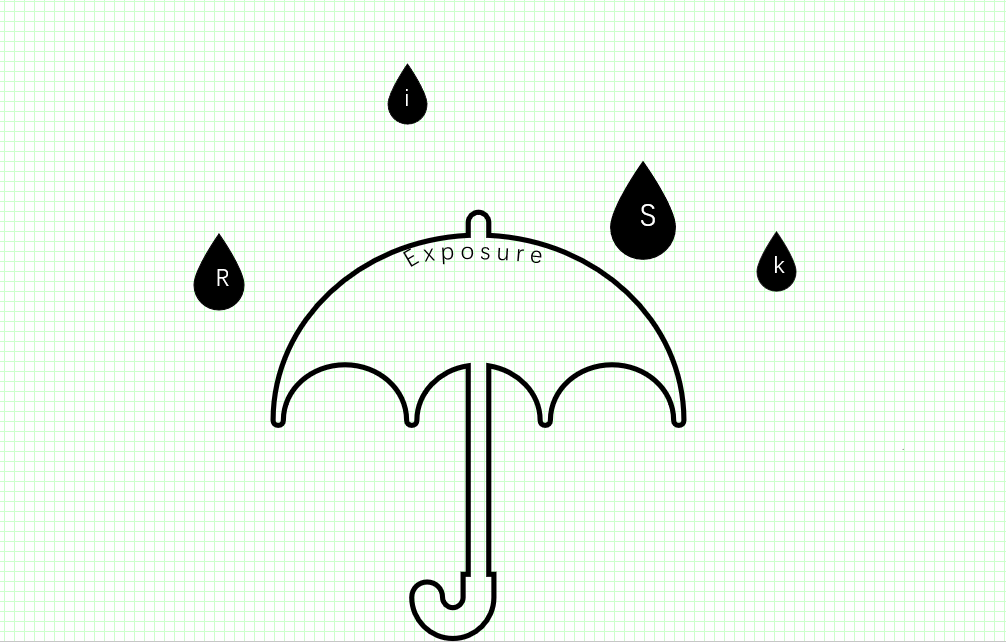Exposure is a key concept in the realm of finance. It refers to the risk involved when undertaking a financial activity and the impact of the risk on that activity.
To put it simply, if you engage in any financial activity, you will have exposure to risk. For example, an investor invested 10,000 USD in BTC, the investor then has exposure to BTC worth 10,000 USD, meaning the investor has exposed himself to the risk of price fluctuations of BTC. The fund invested in BTC will change with the price movements of BTC and the risk inherent in the investment is directly pegged to the price action of BTC.
Basic Definition of Exposure
Exposure involves two basic implications based on its definition.
1. Similarity to positions in concept
Exposure is similar to positions in concept and refers to the part of a financial activity that has financial risks. It can be seen as a financial activity where the investor buys or sells an asset. For instance, exposure of 10,000 USD means an investor has invested 10,000 USD in an asset, whether buy or sell.
2. Role of Risk Analysis
Exposure plays the role of risk analysis and can be used to evaluate the impact of the risk on a financial activity. It can be understood as the risk inherent in an investment during a specific period of time. Therefore, exposure refers to the part of a financial activity that is exposed to risk. For example, 800 million RMB was lent to a company, but 300 million RMB of the loan is not guaranteed, which means the risk exposure of the deal is 300 million RMB.
From its implications, exposure basically involves the scope of responsibilities of an investor for their assets.

Type of Exposures
Exposures can be categorized into the following three types based on their scenarios and focuses.
1. Market Exposure
Market exposure refers to the amount of funds or percentage of a broader portfolio that is invested in a particular type of security, market sector, or industry. Market exposure is usually expressed as a percentage of total portfolio holdings, for instance, as in 10% of a portfolio being exposed to the oil and gas sector, 20% in government bonds or $50,000 in BTC.
The common market exposure types include market exposure by investment type, market exposure by region and market exposure by industry segment. Market exposure represents the amount an investor can lose from the risks unique to a particular investment or asset class. The greater one's market exposure, the greater their total market risk in that specific investment area. A concentration of market exposure in any one area can lead to large losses if that area happens to suffer price volatility.
Market exposure is a tool used to measure and balance risk in an investment portfolio. Having too much exposure to a particular area can indicate a portfolio needs to undergo broader diversification.
2. Economic Exposure
Economic exposure, also known as operating exposure, is a type of foreign exchange exposure caused by the effect of unexpected currency fluctuations on a company’s future cash flows, foreign investments, and earnings.
Exposure increases as foreign exchange volatility increases and decreases as it falls. Economic exposure is obviously greater for multinational companies that have numerous subsidiaries overseas and a huge number of transactions involving foreign currencies.
As economic exposure deals with unexpected changes in foreign exchange rates, it is difficult to measure precisely and hence challenging to hedge. However, it can be mitigated either through operational strategies or currency risk mitigation strategies. Operational strategies involve diversification of production facilities, end-product markets, and financing sources, since currency effects may offset each other to some extent if a number of different currencies are involved. Currency risk-mitigation strategies involve matching currency flows, risk-sharing agreements, and currency swaps.
3. Transaction Exposure
Transaction exposure is the level of uncertainty businesses involved in international trade face. Specifically, it is the risk that currency exchange rates will fluctuate after a firm has already undertaken a financial obligation, leading to major changes to the firm’s equities, assets, debts or earnings. When an entity calculates its equities, assets, debts or earnings using a foreign currency, it’s subject to the danger of transaction exposure.
The danger of transaction exposure is typically one-sided. Only the business that completes a transaction in a foreign currency may feel the vulnerability. One way that firms can limit their exposure to changes in the exchange rate is to implement a hedging strategy. By purchasing currency swaps or hedging through futures contracts, a company is able to lock in a rate of currency exchange for a set period of time and minimize translation risk.

Exposure is a key concept in financial risks and is not equal to financial risks. Financial assets with huge exposure do not necessarily mean they have a high level of risks.














